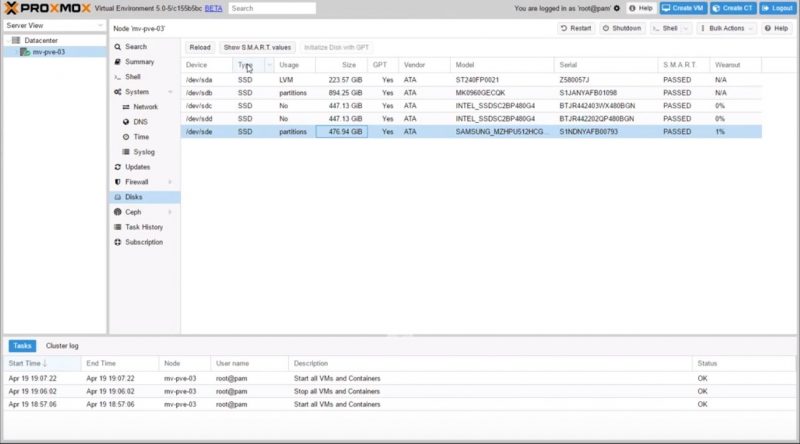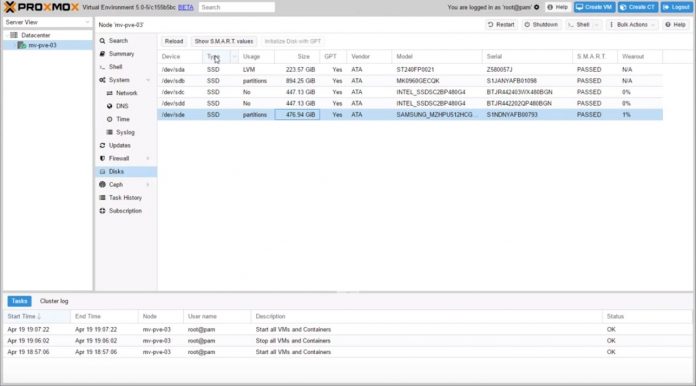Proxmox VE is one of those projects that offers an enormous value to its users. Proxmox VE is a virtualization and container platform that includes provisions for popular open source storage schemes such as ZFS and Ceph. Although the new Proxmox VE 5.1 is a “dot” release, it includes major upgrades under the hood. The previous generation Promxox VE 5.0 was released in July 2017 and ever since we have been waiting for some of the features of the Proxmox VE 5.1 release.
A Short Background on Proxmox VE
At STH our introduction to Proxmox VE came when we wanted to use something “cheap” (open source) to set up an initial hosting cluster years ago. As I meet folks in the community who use Proxmox VE, this is a common path.

Proxmox VE has a slew of features from the open source community all packaged neatly with cluster management and a GUI. For example, if you have a single node and want to use ZFS plus KVM as a hypervisor, Proxmox will handle that. Likewise, if you want to have LXC containers hosted with a Ceph storage backend, Proxmox can handle that scenario as well. Features such as live migration are supported with VMs either scripted or with the GUI making it a relatively simple process.
Since it is built on Debian, and largely based on open source standards, even a novice Linux admin can maintain a cluster with the help of a popular website. If you are trying to set up a budget-constrained hyper-converged cluster that you can later get commercial support for, Proxmox is an attractive solution. If you are an SMB service provider that is having customers balk at VMware and Windows licensing costs, Proxmox is going to be a solid solution.
What is new in Proxmox VE 5.1
When we talk about the key features of Proxmox VE, the new 5.1 release has a major upgrade to almost every one of them. Here are a few examples:
- Debian Stretch 9.2 Update with Linux Kernel 4.13.3
- QEMU 2.9.1
- LXC updated to 2.1
- Ceph 12.2.1 (Luminous LTS, stable), packaged by Proxmox
- ZFS 0.7.2
Packages like Ceph Luminous LTS and ZFS 0.72 are major updates in terms of feature sets over previous generations. Upgrading to a newer underlying OS and Linux Kernel also means better support for some of the new hardware generations that we are seeing out there such as AMD EPYC, Xeon Scalable, and Intel Atom C3000 codenamed Denverton. We tested the Proxmox VE 5.0 release with the Atom C3000 series and moving to Proxmox VE 5.x is our recommendation for these new architectures.
Ceph Luminous is the new LTS release that brings features such as the Bluestore engine. We are going to be using ZFS 0.7.2 in one of our new articles showing QAT acceleration.
Final Words
Overall, this is a big upgrade. Especially if you have to upgrade Ceph or are upgrading from a Proxmox VE 4.x release, it is worth reading the upgrade instructions a few times before proceeding.




